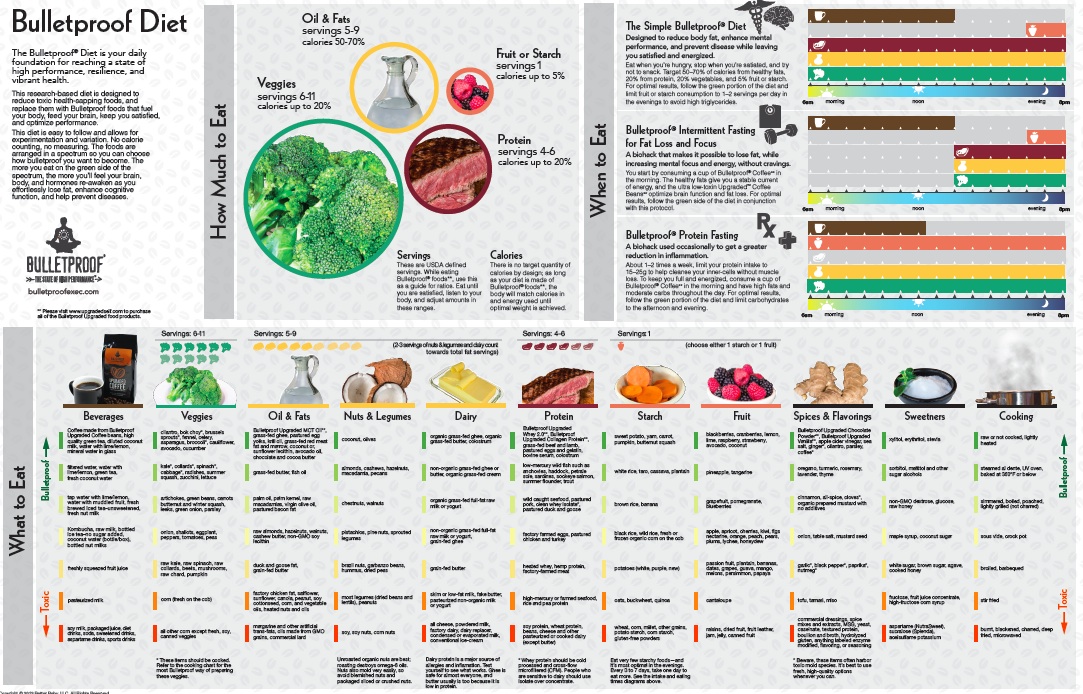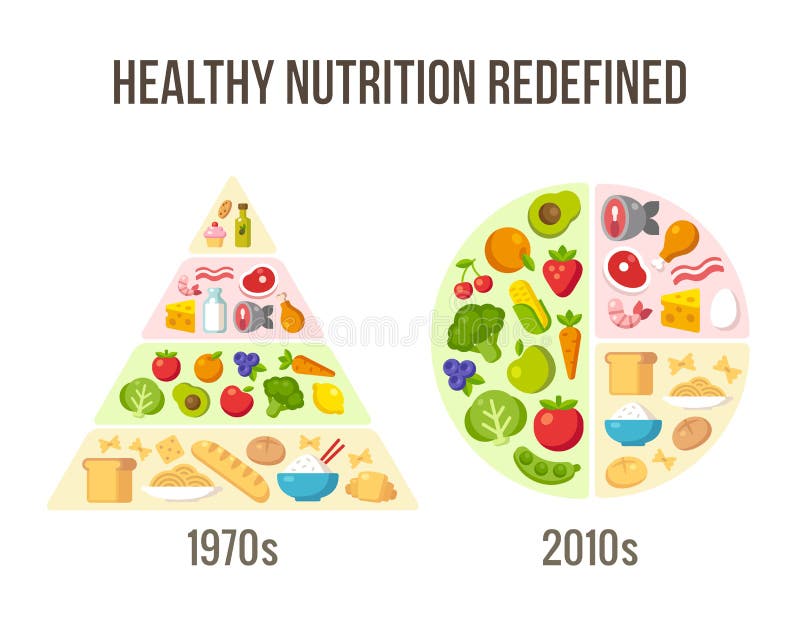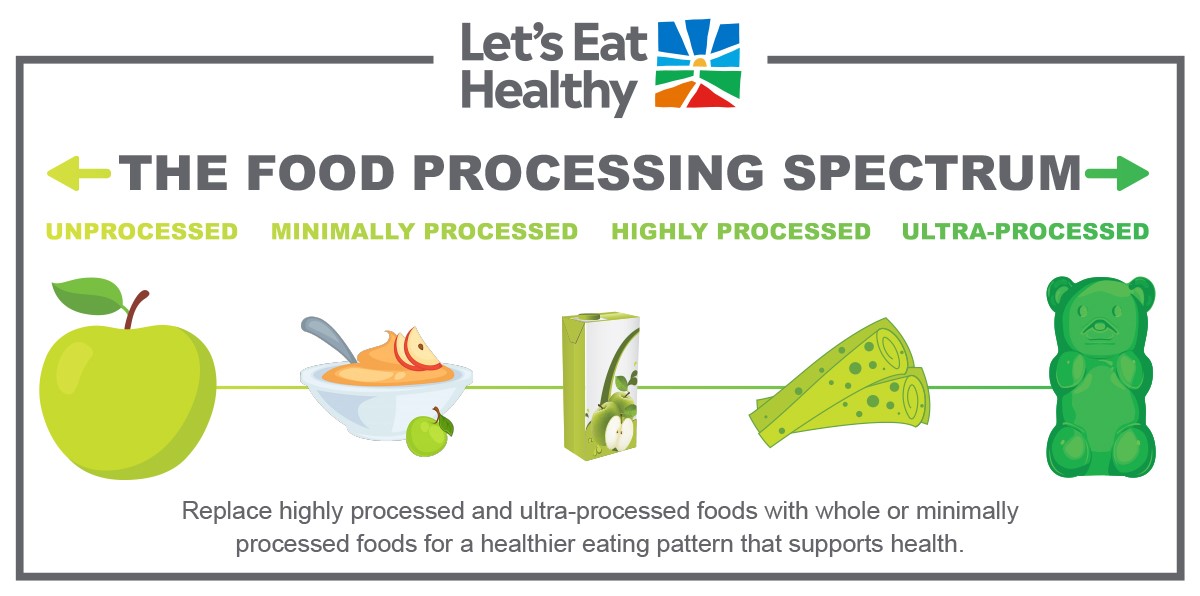Uncover the hidden dangers lurking in modern diets that could be sabotaging your health and hindering your weight loss efforts.

Image courtesy of via DALL-E 3
Table of Contents
- Introduction: How Eating Has Changed
- Let’s Talk About Nutrients
- Yummy or Not? Food Quality Today
- When Food Causes Frowns: Health Ups and Downs
- Trendy Eats: The Cool and The Concerning
- The Rainbow on Your Plate: Balanced Diets
- Smart Snacking: Best Bites Between Meals
- The Adventure of Grocery Shopping
- Global Grub: How Other Kids Eat
- Your Body is a Temple: Top Tips for Terrific Health
- Conclusion: The Power on Your Plate
- FAQs
Introduction: How Eating Has Changed
We’ll kick off with a look at how our meals have changed over the years, from fruits and veggies growing in grandma’s backyard to the foods we find in grocery stores today.
A Look Back in Time
Understanding how what we eat has changed from the past to now.
What is a Modern Diet?
Explaining the types of food that make up what most people eat these days.
Let’s Talk About Nutrients
Dig in and discover what nutrients are all about! Nutrients are like tiny superpowers in the food we eat that help our bodies work their best. Imagine them as little friends inside your food, making sure you grow big and strong.
Vitamins and Energy
Have you heard of vitamins? They’re like magic potions that keep us healthy and full of energy. Each vitamin has a special job to do, like helping us see better, keeping our skin glowing, or even protecting us from getting sick. So, it’s essential to gobble up foods that are loaded with these amazing vitamins!
What’s Missing From Our Plates?
Sometimes, the foods we eat today might be missing some of these essential nutrients. That’s because as our meals have changed over time, we may not always get all the good stuff our bodies need to stay in tip-top shape. It’s like if you were missing a puzzle piece – your body needs all the right pieces (nutrients) to work properly!
Yummy or Not? Food Quality Today
In this section, we’re going to talk about what makes a food yummy or not-so-yummy. It’s more than just about taste- it’s also about how good the food is for our bodies!

Image courtesy of www.newhope.com via Google Images
The Journey From Farm to Table
Do you ever wonder where the food you eat comes from? Most of our food goes through a long journey from the farm to our table. Sometimes, this journey affects the quality of the food. For example, fruits and veggies that are picked too early might not have all the nutrients they should. So, it’s important to try to eat food that is fresh and hasn’t been sitting on a shelf for a long time.
Reading Food Labels
Have you ever looked closely at the labels on the foods you eat? These labels tell us a lot about what’s in the food. Sometimes, foods that seem healthy might have hidden sugars or fats that aren’t good for us. By learning how to read food labels, we can make better choices about what we put in our bodies. It’s like being a detective and making sure we’re getting the best foods for our health!
When Food Causes Frowns: Health Ups and Downs
Talking about how some foods can make us feel bleh and lead to sickness if we’re not careful.
Sugar, Salt, and Other Sneaky Stuff
Uncovering how too much sugar and salt in food can be not-so-good for our health. Sugar can give us lots of energy really quickly, but too much of it can lead to problems like cavities in our teeth and even make us gain weight. And salt, while it can make food taste yummy, can cause our bodies to keep too much water and make our hearts work harder than they should. That’s why it’s important to enjoy these things in moderation, just like having a little treat every now and then!
Long-term Troubles
Understanding how what we eat can affect us a lot later on in life, like causing chronic diseases. When we eat lots of unhealthy foods over time, it can lead to things like heart disease, diabetes, and other serious illnesses. That’s why it’s super important to fill our plates with foods that help keep our bodies strong and healthy. By choosing lots of fruits, veggies, whole grains, and lean proteins, we can give our bodies the right kind of fuel they need to stay in tiptop shape!
Trendy Eats: The Cool and The Concerning
Checking out the latest popular diets and what they mean for us kiddos can be pretty interesting. Whether it’s all about eating veggies like a rabbit or counting points like a math whiz, trendy diets seem to pop up all the time. Let’s take a closer look at what’s hot on the menu and why some fads might not always be fab.

Image courtesy of you3coaching.com via Google Images
What’s Hot on the Menu
Exploring the diets that are making waves can be like stepping into a whole new food world. From eating only plants in a vegan diet to cutting out every carb in sight with a keto diet, people are always trying new things to boost their health or shed some pounds. These trendy diets often come with promises of feeling better, having more energy, or even dropping a few sizes.
Some diets may focus on emphasizing certain food groups like protein or healthy fats, while others might require you to skip meals altogether on specific days. It’s essential to understand that what works for one person may not work for another, and some of these diets can be pretty strict, so it’s crucial to consult with a healthcare provider before diving headfirst into trendy food plans.
Why Fads Aren’t Always Fab
Discussing how following the crowd in what we eat might not always be the best idea is important. While some trendy diets can offer benefits, others may not be as fantastic for our health as they claim. It’s essential to be cautious of fad diets that promise quick fixes or extreme restrictions, as they may lead to nutritional deficiencies or even harmful effects on our bodies.
Instead of hopping on every food trend that comes along, it’s best to focus on eating a balanced diet with a variety of wholesome foods. This way, we can ensure we’re getting all the nutrients our bodies need to grow strong and stay healthy in the long run. Remember, trendy might be cool, but when it comes to our health, it’s essential to make informed and sustainable choices that work best for our individual needs.
The Rainbow on Your Plate: Balanced Diets
Before we dive into what a balanced diet looks like, let’s talk about the colors on your plate. When you see a rainbow of food, you’re not just getting a feast for your eyes – you’re giving your body a feast of nutrients too!
Colors for Health
Imagine your plate filled with different colors – red tomatoes, orange carrots, green spinach, and more. Each color represents different vitamins and minerals that your body needs to grow, stay strong, and fight off sickness. Eating a variety of colors means you’re getting a variety of nutrients, and that’s super important for your health!
Daily Dishes for Super Kids
Ever wonder what a day of delicious and nutritious meals looks like for a super kid like yourself? Here are some ideas to help you fuel your fantastic self:
Breakfast: Start your day with a bowl of yogurt topped with colorful berries and a sprinkle of granola for a protein-packed and fruity kick.
Lunch: Wrap up some sliced turkey, cheese, lettuce, and tomato in a whole wheat tortilla for a balanced and tasty lunch on the go. Add a side of crunchy carrots and hummus for extra nutrients.
Dinner: Serve up a rainbow stir-fry with chicken, bell peppers, broccoli, and snow peas over brown rice. The vibrant colors and mix of veggies make this meal both tasty and nutritious.
Snacks: Need a pick-me-up between meals? Try apple slices with peanut butter, whole grain crackers with cheese, or a handful of trail mix for a satisfying and healthy snack.
Smart Snacking: Best Bites Between Meals
Snacking can be a superpower when it comes to keeping our energy up and our bodies fueled throughout the day. Choosing the right snacks can help us avoid those mid-afternoon slumps and keep us feeling our best. Let’s dive into the world of smart snacking and explore some tasty and healthy options!
| Issue | Description |
|---|---|
| Lack of Nutrients | Modern diets often lack essential nutrients such as vitamins, minerals, and fiber, leading to various health problems. |
| High in Processed Foods | Many modern diets rely heavily on processed foods that are high in sugar, unhealthy fats, and additives, which can contribute to obesity and chronic diseases. |
| Too Much Sugar | Sugar is a major component of modern diets, leading to weight gain, diabetes, and other health issues. |
| Lack of Variety | Many people stick to a limited range of foods, missing out on the benefits of a diverse diet that can provide different nutrients. |
| Over-Reliance on Convenience Foods | Busy lifestyles often lead to consuming ready-made meals and fast food, which are typically high in calories, salt, and preservatives. |

Image courtesy of www.hartman-group.com via Google Images
Snack Time, Fun Time
When it’s snack time, it’s the perfect opportunity to refuel with foods that are not only delicious but also good for you. Here are some ideas for tasty and healthy snacks that will keep you going strong:
- Fresh fruits like apples, bananas, or berries
- Veggies like carrots, cucumbers, or cherry tomatoes with hummus for dipping
- Greek yogurt with a sprinkle of granola
- Whole grain crackers with cheese slices
- A handful of nuts or seeds
These snacks are not only yummy but also packed with nutrients that will help keep your body running smoothly throughout the day.
Snack Pitfalls to Avoid
While some snacks may seem like a good choice, they can actually be sneaky sources of added sugars and unhealthy fats. Keep an eye out for these snack pitfalls and choose wisely:
- Avoid sugary drinks like soda or fruit juices
- Watch out for snacks high in added sugars, like cookies, candy, or sweetened cereals
- Avoid snacks that are high in unhealthy fats, like chips or fried foods
- Opt for whole, minimally processed snacks over packaged and processed options
By being mindful of the snacks you choose, you can keep your energy levels steady and support your overall health and well-being.
The Adventure of Grocery Shopping
Imagine you’re going on a treasure hunt, but instead of X marking the spot, you have a grocery list! Making a list before heading to the store is like crafting the perfect map to find all the goodies you need to keep your body strong and healthy.
Discoveries in the Aisles
As you step into the grocery store, you’ll find yourself surrounded by rows and rows of tempting treats. But not all foods are created equal! Navigating the aisles can be like finding hidden gems if you know what to look for. Keep an eye out for colorful fruits and veggies, whole grains, and lean proteins. These are the champions for your health and well-being, hiding in plain sight among all the other foods on offer.
Global Grub: How Other Kids Eat
Have you ever wondered what kids in other countries eat for breakfast, lunch, and dinner? Let’s take a delicious journey around the globe to find out!

Image courtesy of www.dreamstime.com via Google Images
In Japan, a typical breakfast may include rice, miso soup, grilled fish, and pickled vegetables. This might be very different from what you eat in the morning, but it shows how diverse food can be.
Over in Italy, children might enjoy pasta with a tomato-based sauce and a side of salad for lunch. It’s a balanced meal that provides energy for an active day of playing and learning.
Lessons From Faraway Foods
By exploring how kids in other cultures eat, we can learn important lessons about nutritious and balanced diets. It’s not just about trying new foods, but also understanding the benefits of different ingredients.
For example, many countries emphasize the importance of fresh fruits and vegetables in every meal. This teaches us the value of vitamins and minerals that our bodies need to stay healthy and strong.
So, next time you sit down to eat, remember that there’s a whole world of flavors and nutrients out there waiting to be explored!
Your Body is a Temple: Top Tips for Terrific Health
Now that we’ve learned about how food has changed over time and the impact it has on our health, let’s dive into some top tips for keeping your body in tip-top shape!
Feeding Your Phenomenal Self
It’s essential to choose the right fuel for your body so you can feel amazing! Make sure to include a variety of fruits, vegetables, whole grains, lean proteins, and healthy fats in your meals. These foods provide the vitamins, minerals, and nutrients your body needs to grow strong and stay healthy. Remember, eating a balanced diet is like giving your body a big hug from the inside!
Glorious Grub Games!
Who says eating healthy can’t be fun? Try out some foodie activities and challenges to encourage healthy eating habits. You can create a rainbow plate by choosing foods of different colors, have a taste test with new fruits and veggies, or even try your hand at making a healthy recipe from scratch. The more you play with your food, the more you’ll enjoy eating right!
Conclusion: The Power on Your Plate
As we wrap up our foodie journey, it’s important to remember that what you eat has a big impact on your health and well-being. The modern diet may offer convenience and tasty treats, but it’s also essential to make mindful choices for a balanced and nutritious plate.

Image courtesy of www.healthyeating.org via Google Images
The Modern Diet’s Superpowers
Your plate is like a treasure chest filled with superpowers. The foods you eat can fuel your body, boost your energy, and help you grow strong. By choosing a variety of colorful fruits and veggies, lean proteins, whole grains, and healthy fats, you can unlock the potential for a healthier you.
The Health Impact Equation
Think of your body as a temple and treat it with care. Eating smart isn’t just about filling your belly; it’s about giving yourself the best chance to thrive. By making wise choices in your meals, you’re giving yourself the power to be your best self.
Your Foodie Adventure Awaits
Remember, every bite you take is a chance to nourish your body and mind. So, embrace the power on your plate, make delicious and nutritious choices, and savor the journey to a healthier and happier you!
FAQs
Can Changing What I Eat Really Make Me Healthier?
Yes, absolutely! The food you eat plays a big role in how healthy you are. By choosing nutritious foods like fruits, vegetables, whole grains, and lean proteins, you can give your body the vitamins and minerals it needs to grow strong and stay healthy. Eating well can help you feel more energetic, keep your immune system strong, and even improve your mood!
Is Fast Food Always Bad?
Fast food can be tasty, but it’s not always the healthiest choice. Many fast food options are high in unhealthy fats, sugars, and salt, which can lead to problems like obesity, diabetes, and heart disease if eaten too often. It’s okay to enjoy fast food once in a while as a treat, but try to balance it out with more nutritious meals at home.
How Do I Tell My Parents I Want to Eat Healthier?
Talking to your parents about wanting to eat healthier is a great idea! You can start by explaining why it’s important to you, like wanting to have more energy for activities, do better in school, or just feel your best. You can also ask for their help in choosing healthier options at the grocery store and planning meals together. Remember, your parents want what’s best for you, so they’ll likely be supportive of your efforts to eat healthier!




